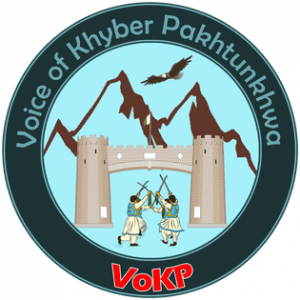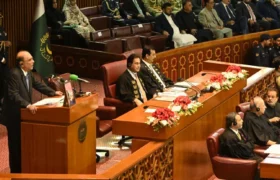JUMA KHAN SUFI
Old habits die hard. The area under discussion had been outside the state parameters for centuries. Only the advent of British imperialism imparted some formal status to these tribes in the view of their history, tradition of independent status free from external interference and their attachment to their tribal values. The British did introduce some sort of indirect state control over the area, bringing minor changes to their administration from time to time. However, they never tried to take active control of tribal lives.
Pakistan, to some extent, continued this British policy for almost seven decades. This Alsatian status of the region on its western border was never in strategic and political interest of Pakistan and its merger was overdue long ago. This negligence was also against the social cohesion of Pakistani society, especially of Pukhtoons. Merger created ill-ease among the stake holders of senior generation used to the age-old privileges they traditionally enjoyed under the so-called independent status. External forces in the shape of religious right, some Pukhtoon nationalists and traditional Kabul old guards also prop up these anti-merger sentiments on account of their separate interests. They are also stake holders of the past. Conditions have changed. Despite all these ill-feelings, the verdict of history is on the side of merger.
Needless to recount different events in the course of history when this area was considered bulwark of invasion or attack in the recent history, first against the British rule at Delhi and then against Islamabad after the inception of Pakistan. During and on the eve of two world wars especially and under normal conditions, generally, too, Italians, Germans, Turks, Russians, Soviets, Indian revolutionaries, US and Nato used this area for the different motives against the Central authority. Memories are still afresh whereby different powers used their pawns and proxies for money. Now it depends upon the tribal youth to come out openly in support of this new development. Because only youth can safeguard the present and future of their landscape, who are the ones to take benefit of this new law-governed position and bringing up tribal belt to level it with settled districts. Old generation have played their wicket. It is now new generation to become locomotives of history. Youth have no memory of the past existence. They are the generation of internet and social media. Though literacy rate in former FATA is far behind other parts of Pakistan, yet with due attention the uneducated can also be part of the change.
Every effort of media and development should first and foremost target the youth. In order to actualize the merger process, the confidence of youth is of utmost importance. So priority should be given to education and training. The formal education must be supplemented with informal education and adult courses should be introduced in the area. The purpose of education should be result oriented and not creation of vocal unemployed youth drawn towards unhealthy activities. In this connection job creation and the induction of youth in various fields must be state priority. Special allocation of money and the proper utilization of budget be ensured so that tribal youth feel the feelings of partnership in developmental activities.
Tribal belt has land which grow various crops, vegetables and crops. Government must pay attention to research and development in farming. Special agricultural authority catering for farming needs should be formed. Then there are possibilities of industrialization on small scale basis which can engage younger population on this score. Wide vistas of opportunities should come into being so that educated tribal youth instead of migrating to other districts find ample opportunity at their doorstep. Development needs of the area is necessary to employ younger generation in gainful professions and wean them away from extremist and unhealthy endeavors. Everything boils down to money and money spent in right manner can alleviate people from poverty. The economic activities in the merged districts must take a boost so that youth find their rightful place in these efforts. If money is available, I am sure tribal youth would wholeheartedly lead the track.
Tribalism is a curse as far as modern age is concerned. Youth could see themselves in another light as tax payers than their ancestors waiting for doles from the governments. Bill and tax payment culture may find congenial atmosphere among youth. Tribal region or merged districts are awash with tapped and untapped resources. Provincial government is needed to create special authority concerning the mineral resources of the area. Efforts should be made to work towards public/private partnership and even ownership of the minefields so that genuine locals, instead of outside moneyed classes, benefit from it then traditional wheeler-dealers of tribal headsmen. One cannot belittle the role of youth in the ongoing process of merger of the former FATA. Though conditions vary from one district to another, yet right methodology can be evolved to attract youth towards their perennial interests. Conditions in norther districts are softer than both Waziristans, North and South. Historically, Waziristan is the hardest nut to crack. Double efforts are needed there. It is geographically biggest area, comprised of hardy population and mostly inaccessible.
Most of the troubles emanate from there. Enemies concentrate on that area, as far as the lessons of history go. Wazir, Masud and Dawar youth, alongside Bhettanis, are resourceful and hardworking people and the youth there can become harbingers of change. Proper education, proper training, proper spending of money, proper strategy and proper tactics be adopted to engage youth in the process and onward march of development in the merged districts. There is light at the end of the tunnel and tribal youth can perform miracles, if guided in right direction.





